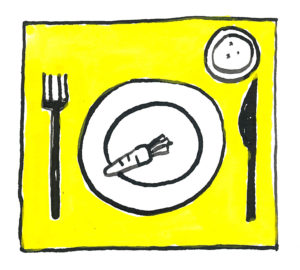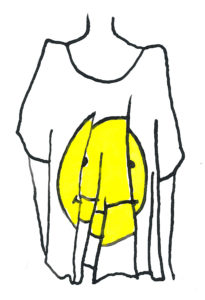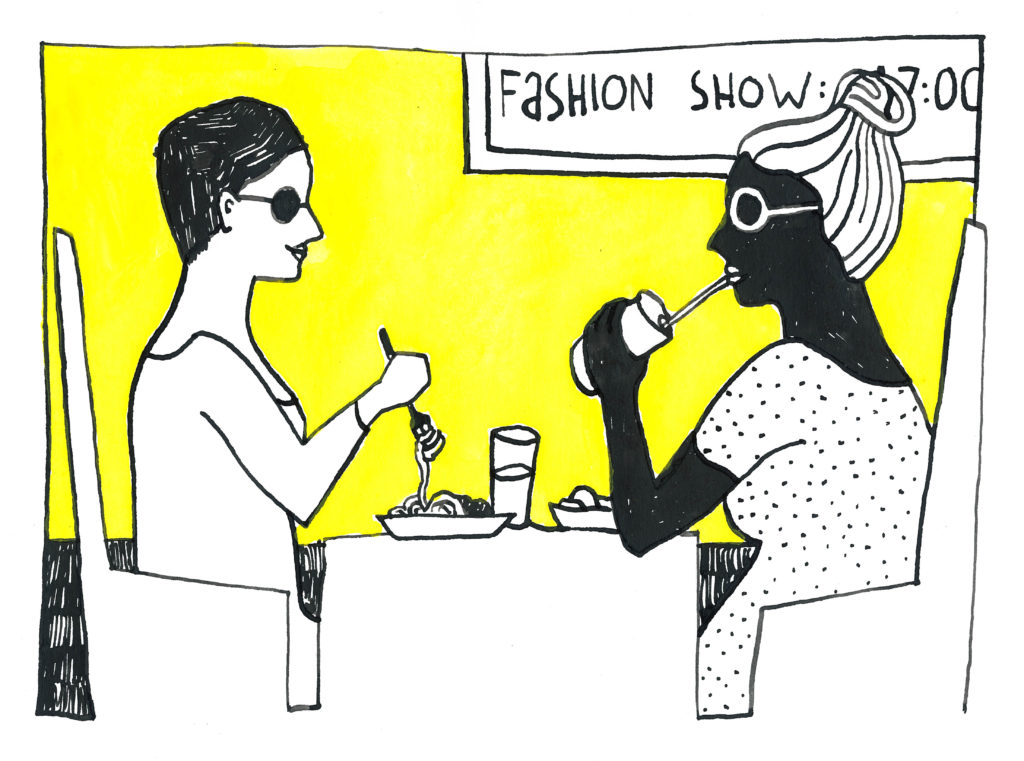With its newly approved “loi mannequin” France commits itself to combatting anorexia among models and teenagers. Will it have a significant impact on women’s health – or is it simply a futile attempt?
By Alessandra Ivaldi / 2.8.2017
 The “loi mannequin”, aiming to combat anorexia, has just been set in motion in France. This very dangerous eating disorder mainly afflicts girls and young women who consider exceedingly skinny models as beautiful examples to imitate. It also plagues the models themselves who are often forced to sacrifice their physical and mental health to further their career. Anorexia does not only lead to physical degradation but also has devastating effects on mental health. If it is not properly treated soon enough, it can become a permanent condition and, in the worst cases, lead to death.
The “loi mannequin”, aiming to combat anorexia, has just been set in motion in France. This very dangerous eating disorder mainly afflicts girls and young women who consider exceedingly skinny models as beautiful examples to imitate. It also plagues the models themselves who are often forced to sacrifice their physical and mental health to further their career. Anorexia does not only lead to physical degradation but also has devastating effects on mental health. If it is not properly treated soon enough, it can become a permanent condition and, in the worst cases, lead to death.
It has been estimated that in France about 600,000 young people suffer from eating disorders, 40,000 of whom suffer from anorexia. What’s more, this disorder represents the second greatest cause of death among 15-24 year olds, after car accidents.
Among the victims of anorexia is the courageous former model Victoire Maçon Dauxerre. After being humiliated, suffering and even attempting suicide she has since been able to make a new life for herself and publish a tragic and shocking bestseller about the “secret life” of models. Jamais assez maigre. Journal d’un top model. (‘Never skinny enough: the diary of a top model) is the meaningful title of the model’s “diary” in which she tells the story of her painful experience.
 She was seventeen years old when she was scouted by a modeling agency. It was a difficult time for Victoire. Like many other girls her age, the future model was in a state of uncertainty. Her dream was to study at the prestigious Sciences Po university, but she unfortunately did not pass the entrance exam. Fragile and without a clear idea of what she should choose for her future, she gave in to the seduction of the shimmering fashion industry. Her head was full of dreams: travelling to wonderful places, easy money, fame… However, the fashion industry had very different surprises in store.
She was seventeen years old when she was scouted by a modeling agency. It was a difficult time for Victoire. Like many other girls her age, the future model was in a state of uncertainty. Her dream was to study at the prestigious Sciences Po university, but she unfortunately did not pass the entrance exam. Fragile and without a clear idea of what she should choose for her future, she gave in to the seduction of the shimmering fashion industry. Her head was full of dreams: travelling to wonderful places, easy money, fame… However, the fashion industry had very different surprises in store.
Victoire had always been a good-looking girl, tall (1.78 metres) and thin… but not thin enough to fit into a European size 32 (UK size 4). That was the beginning of the nightmare. Victoire stopped eating, ending up weighing a mere 47 kilos. She starved herself, lost her hair and became skeletal. But fashion proved to be a drug and there was no way for her to get free of her addiction. Remembering these terrible moments, Victoire explains that the more weight you lose, the more you see yourself as being fat. And the irony of the situation is that models are forced to stop eating, despite the fact that the majority of their pictures are later altered to make them appear even skinnier.
Time passed by and Victoire became more and more desperate and overwhelmed, until she took the extreme decision to attempt suicide. However, Victoire proved stronger than many others and managed to survive. Now she tells us her story without hesitation. In the fashion world not everyone has the chance to tell the truth. Victoire was able to write her book because she abandoned the fashion industry.
 Jamais assez maigre is a journey through a hellish world, where you can find models who vomit, take laxatives and drugs to endure starvation and exhaustion in the weeks leading up to fashion shows. Even sport is forbidden for “fear” of developing muscles.
Jamais assez maigre is a journey through a hellish world, where you can find models who vomit, take laxatives and drugs to endure starvation and exhaustion in the weeks leading up to fashion shows. Even sport is forbidden for “fear” of developing muscles.
Models aren’t allowed to complain. If one of them feels sick or faints before a show, no one dares to comment on it. It is a “normal” situation that isn’t worth talking about. It is a devious and hypocritical world. Victoire writes of how no one tells models not to eat. You simply know that you must be able to fit into the dresses they give you, which means that your only choice is to lose weight. The system is designed so that in the end no one can be accused of encouraging anorexia.
Victoire has since graduated from the Sorbonne in Paris where she studied philosophy. She wanted to “find her brain again”, to stop seeing herself as just a body. After, she went to London where she got a master’s degree in acting. Now her goal is to dedicate herself to show business. She is aware that the level of competition will be high, but at least thinness will no longer represent her only chance of success.
The new French law aims to prevent such tragedies, by contributing to the development of a healthier body image in advertising. The “loi mannequin”, which was put forward by the socialist government under the Presidency of François Hollande, was approved in January 2016. It has finally been set in motion and today represents a revolutionary act in the French fashion world.
 In order to participate in fashion shows and photo shoots, models are now required to have a medical certificate, valid for up to two years, which will confirm their general physical well-being. This will be assessed by taking into account body mass index (BMI), derived from the mass and height of an individual. According to the World Health Organization, a person is categorized as underweight if their BMI is less than 18.5.
In order to participate in fashion shows and photo shoots, models are now required to have a medical certificate, valid for up to two years, which will confirm their general physical well-being. This will be assessed by taking into account body mass index (BMI), derived from the mass and height of an individual. According to the World Health Organization, a person is categorized as underweight if their BMI is less than 18.5.
The new law affects models and modeling agencies from all European countries working in France, and there will be tremendous penalties, or even one year in prison, for those who do not respect the norms imposed by the “loi mannequin”.
The law will be completed on 1st October with the introduction of another norm according to which photos for commercial use will have to bear the disclaimer “digitally enhanced photo” in cases of digital alteration.
With this law, France is moving in the same direction as other European countries. Spain was the first country to adopt a similar rule in September 2006 when they banned all models with a BMI of less than 18 to walk the catwalk at Pasarela Cibeles, Spain’s most important fashion event. In Italy a higher limit of 18.5 has been implemented for models wishing to participate in Milan Fashion Week. Even non-European countries are following the trend. In 2013, for instance, Israel approved a law according to which models must have a BMI superior to 18,5 to appear on fashion magazines and shows.
However, there are still debates about the loi mannequin. On one hand there are the supporters, who consider the new law an important step forward in the fight against anorexia; on the other hand the inevitable critics, especially within the fashion world. There is even a large group of “sceptics”, who think that a law is still not enough. In fact, women are still very often evaluated on the basis of their physical appearance and fashion is not the only sector guilty of promoting this kind of behavior. That is the reason why we cannot expect the loi mannequin to bring about the radical change that its most optimistic advocates hope for.

Illustrations: Luzie Gerb
But what about Victoire? Of course the former model has her own opinion. She sees the new law as first step, but thinks it doesn’t go far enough yet. It could be easy for modeling agencies to circumvent the norms imposed by the new law. Even when she signed her contract to become a model, Victoire was supposed to undergo a medical examination – which she obviously never did.
Moreover, Victoire believes that the fight against anorexia, and against the way in which society regards women, should not only involve France. Since the law will only be valid in France, we must take into consideration the fact that French models could decide to seek employment abroad. While it is true that other countries have already approved similar laws, these actions, separate from each other, are not enough. The former model calls for action at the European, and even global, levels.
One step at a time. First a “rebellious” model, then a book, then a new law… and who knows, maybe in the future we really will have the opportunity to witness an EU-wide action.





Recent Comments